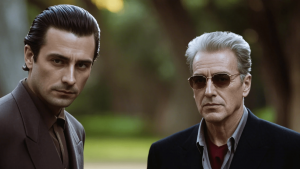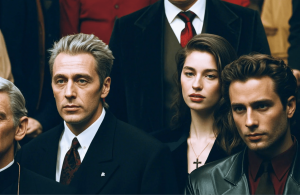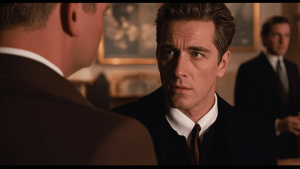𝗧𝗵𝗲 𝗚𝗼𝗱𝗳𝗮𝘁𝗵𝗲𝗿 𝗣𝗮𝗿𝘁 𝗜𝗜𝗜 (1990), directed by Francis Ford Coppola, concludes the saga of the Corleone family. Set in the late 1970s, the film focuses on Michael Corleone (Al Pacino), who is now in his 60s and deeply regretful of the violent legacy he has created. He tries to distance the family from its criminal past and achieve legitimacy, primarily by securing a deal to buy controlling interest in the multinational company, Immobiliare, which is linked to the Vatican.

However, Michael’s attempts at redemption are complicated by family tensions and external threats. His niece, Mary (Sofia Coppola), becomes caught up in the violence when Michael’s plans to make a legitimate business deal are thwarted by Mafia rivals. Meanwhile, Michael’s son, Anthony (Franc D’Ambrosio), is drawn away from the family business to pursue a career in opera, further straining the family’s unity.

As Michael tries to extricate himself from the criminal underworld, the past catches up with him. He faces betrayal from within the family and a dangerous confrontation with his old enemies. The film culminates in a tragic conclusion with the death of Michael’s daughter, Mary, and Michael’s ultimate isolation, reflecting the consequences of his past choices.

The Godfather Part III explores themes of redemption, the inescapable nature of the Corleone family’s violent history, and the personal cost of power. While it didn’t receive the same level of critical acclaim as its predecessors, the film still earned multiple Academy Award nominations, including Best Picture, and is a significant chapter in the Godfather saga.
